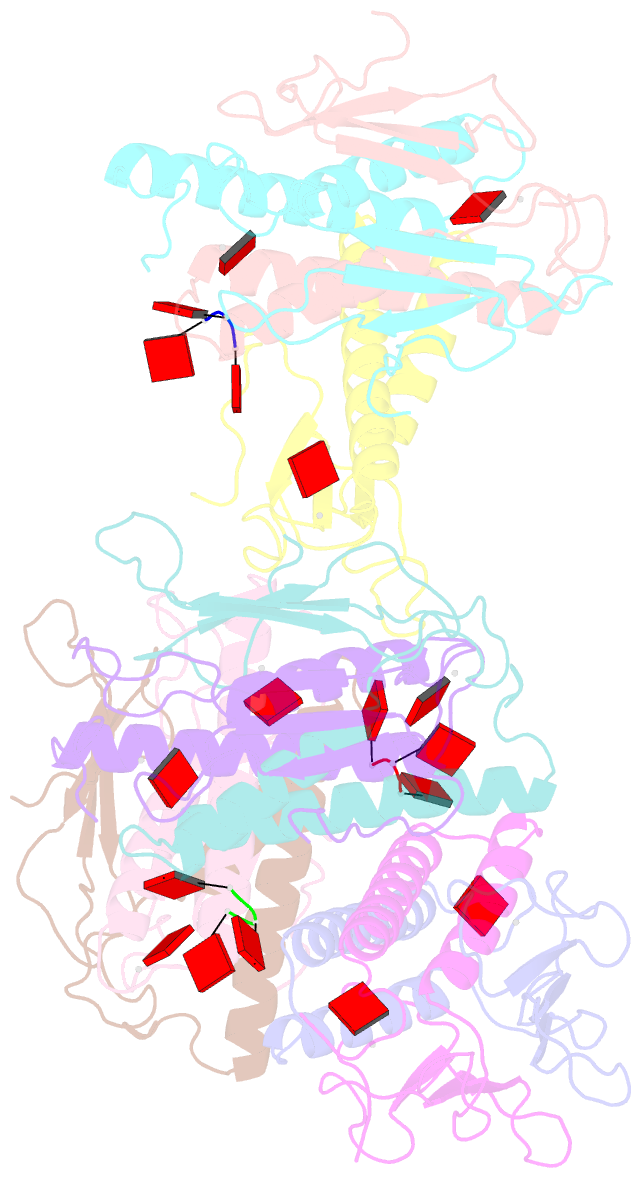Summary information and primary citation
- PDB-id
- 8kbh; SNAP-derived features in text and JSON formats;
DNAproDB
- Class
- viral protein
- Method
- X-ray (1.54 Å)
- Summary
- Structure of cbtad1 complexed with 2',3'-cgamp and ca3
- Reference
- Li D, Xiao Y, Fedorova I, Xiong W, Wang Y, Liu X, Huiting E, Ren J, Gao Z, Zhao X, Cao X, Zhang Y, Bondy-Denomy J, Feng Y (2024): "Single phage proteins sequester signals from TIR and cGAS-like enzymes." Nature. doi: 10.1038/s41586-024-08122-4.
- Abstract
- Prokaryotic anti-phage immune systems use TIR and cGAS-like enzymes to produce 1''-3'-glycocyclic ADP-ribose (1''-3'-gcADPR) and cyclic dinucleotide (CDN) and cyclic trinucleotide (CTN) signalling molecules, respectively, which limit phage replication1-3. However, how phages neutralize these distinct and common systems is largely unclear. Here we show that the Thoeris anti-defence proteins Tad14 and Tad25 both achieve anti-cyclic-oligonucleotide-based anti-phage signalling system (anti-CBASS) activity by simultaneously sequestering CBASS cyclic oligonucleotides. Apart from binding to the Thoeris signals 1''-3'-gcADPR and 1''-2'-gcADPR, Tad1 also binds to numerous CBASS CDNs and CTNs with high affinity, inhibiting CBASS systems that use these molecules in vivo and in vitro. The hexameric Tad1 has six binding sites for CDNs or gcADPR, which are independent of the two high-affinity binding sites for CTNs. Tad2 forms a tetramer that also sequesters various CDNs in addition to gcADPR molecules, using distinct binding sites to simultaneously bind to these signals. Thus, Tad1 and Tad2 are both two-pronged inhibitors that, alongside anti-CBASS protein 2 (Acb26-8), establish a paradigm of phage proteins that use distinct binding sites to flexibly sequester a considerable breadth of cyclic nucleotides.





